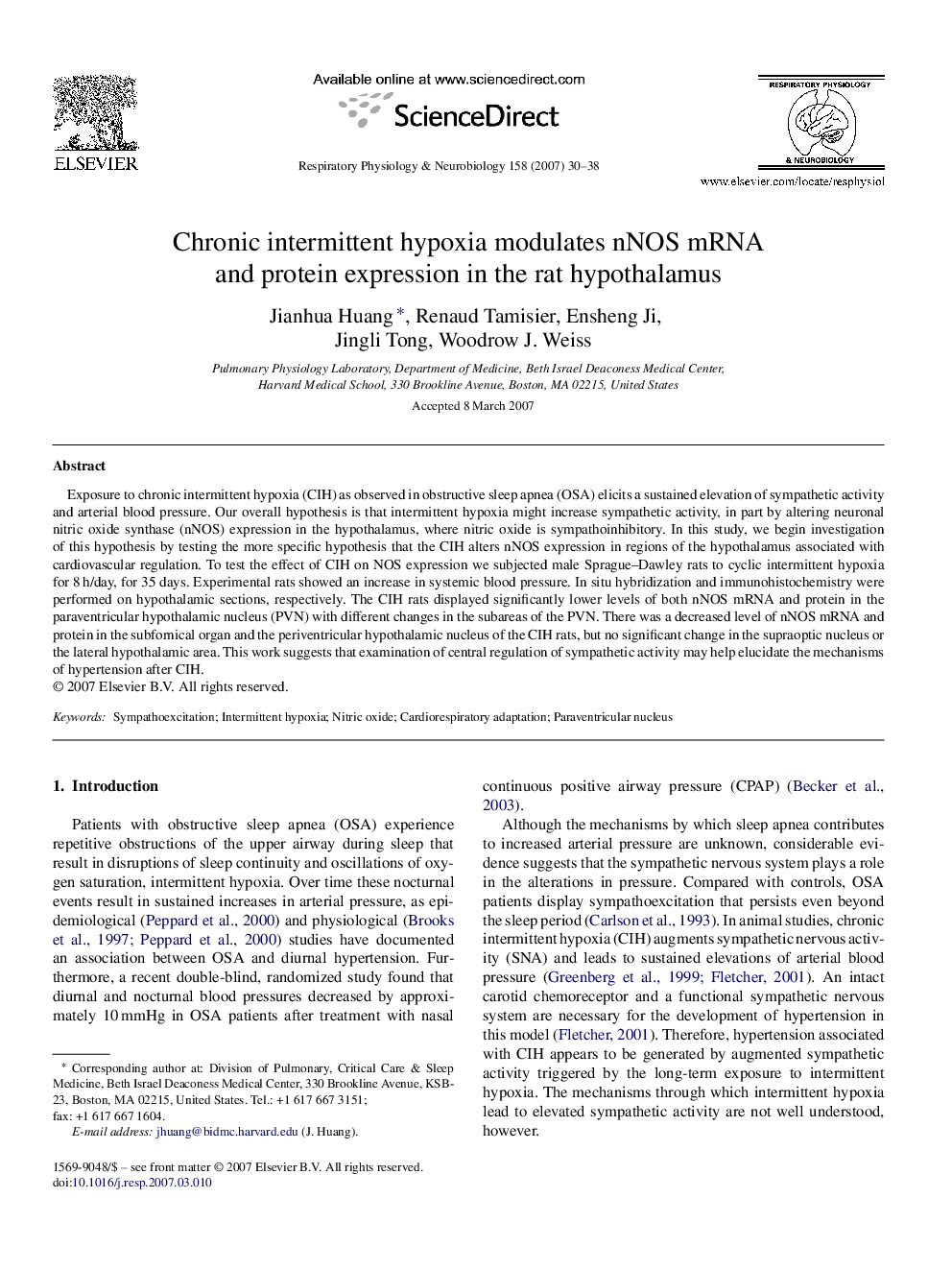| Article ID | Journal | Published Year | Pages | File Type |
|---|---|---|---|---|
| 2848311 | Respiratory Physiology & Neurobiology | 2007 | 9 Pages |
Exposure to chronic intermittent hypoxia (CIH) as observed in obstructive sleep apnea (OSA) elicits a sustained elevation of sympathetic activity and arterial blood pressure. Our overall hypothesis is that intermittent hypoxia might increase sympathetic activity, in part by altering neuronal nitric oxide synthase (nNOS) expression in the hypothalamus, where nitric oxide is sympathoinhibitory. In this study, we begin investigation of this hypothesis by testing the more specific hypothesis that the CIH alters nNOS expression in regions of the hypothalamus associated with cardiovascular regulation. To test the effect of CIH on NOS expression we subjected male Sprague–Dawley rats to cyclic intermittent hypoxia for 8 h/day, for 35 days. Experimental rats showed an increase in systemic blood pressure. In situ hybridization and immunohistochemistry were performed on hypothalamic sections, respectively. The CIH rats displayed significantly lower levels of both nNOS mRNA and protein in the paraventricular hypothalamic nucleus (PVN) with different changes in the subareas of the PVN. There was a decreased level of nNOS mRNA and protein in the subfornical organ and the periventricular hypothalamic nucleus of the CIH rats, but no significant change in the supraoptic nucleus or the lateral hypothalamic area. This work suggests that examination of central regulation of sympathetic activity may help elucidate the mechanisms of hypertension after CIH.
